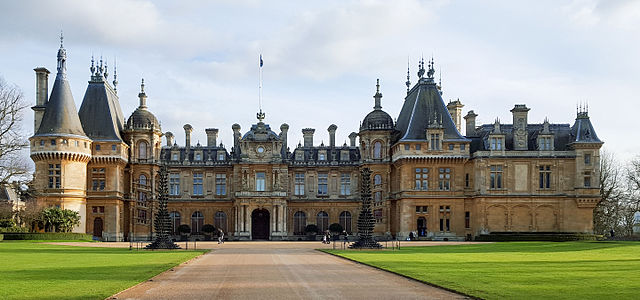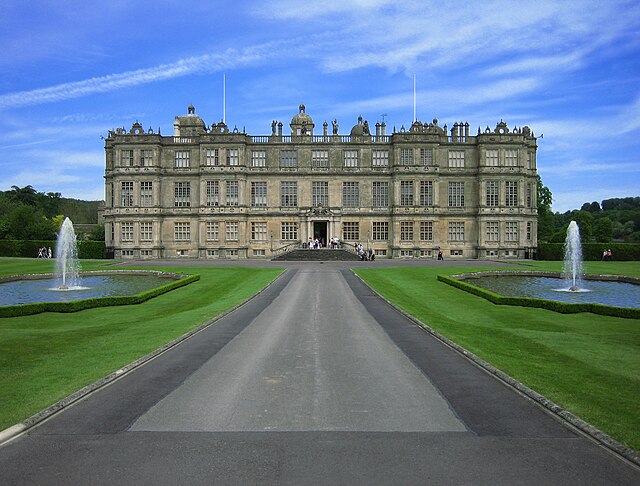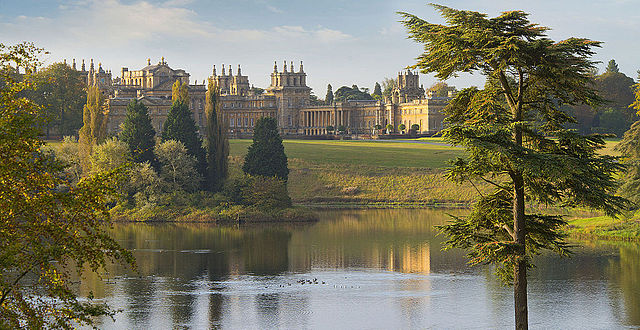Waddesdon Manor is a country house in the village of Waddesdon, in Buckinghamshire, England. Owned by the National Trust and managed by the Rothschild Foundation, it is one of the National Trust's most visited properties, with over 463,000 visitors in 2019.
The north-facing entrance facade
Aerial view of Waddesdon from the north
The Red Drawing Room
Plan of Waddesdon's ground floor. 1:Vestibule; 2:Entrance Hall, 3 Red Drawing room; 4:Grey Drawing Room; 5:Library; 6:Baron's Sitting room; 7:Morning Room; 8:West Hall; 9:West Gallery; 10:East Gallery; 11:Dining Room; 12:Conservatory; 13:Breakfast Room; 14:Kitchen; 15:Servant's Hall; 16:Housekeeper's Rooms; 17:Site of further servants quarters (not illustrated); 18:Terrace and parterre; 19 North Drive; St:staircases.
An English country house is a large house or mansion in the English countryside. Such houses were often owned by individuals who also owned a town house. This allowed them to spend time in the country and in the city—hence, for these people, the term distinguished between town and country. However, the term also encompasses houses that were, and often still are, the full-time residence for the landed gentry who dominated rural Britain until the Reform Act 1832. Frequently, the formal business of the counties was transacted in these country houses, having functional antecedents in manor houses.
Belton House is an English country house in Lincolnshire
In the 20th century Longleat House was the first country house to open to the paying public, and also claims the first safari park outside Africa.
Blenheim Palace
Forde Abbey in Dorset. Many country houses have evolved and been extended over several centuries. Here, the architecture runs from Medieval ecclesiastical to Palladian and on to Strawberry Hill Gothic, while at sometime an attempt at unity has been made by the use of crenelation.








